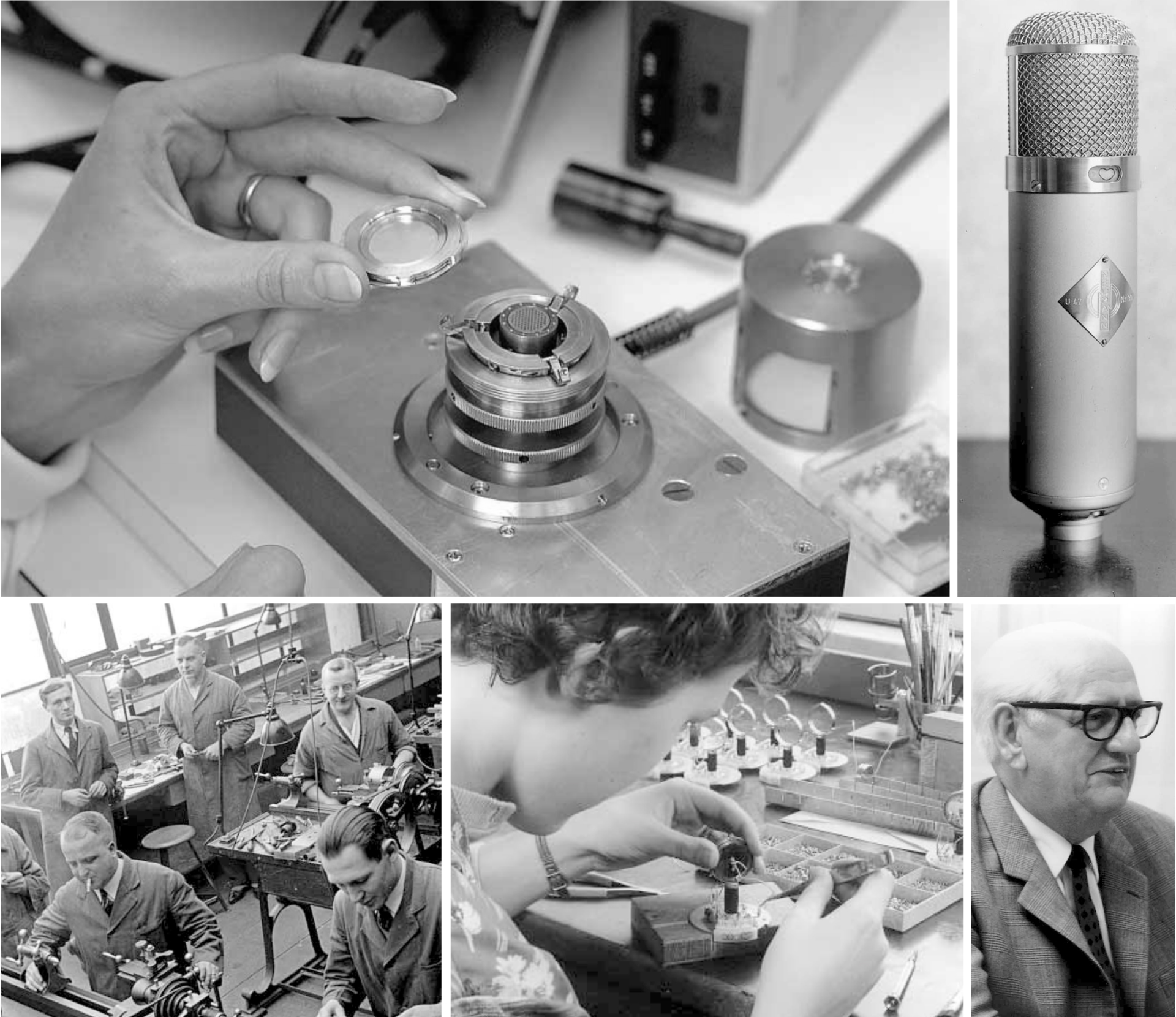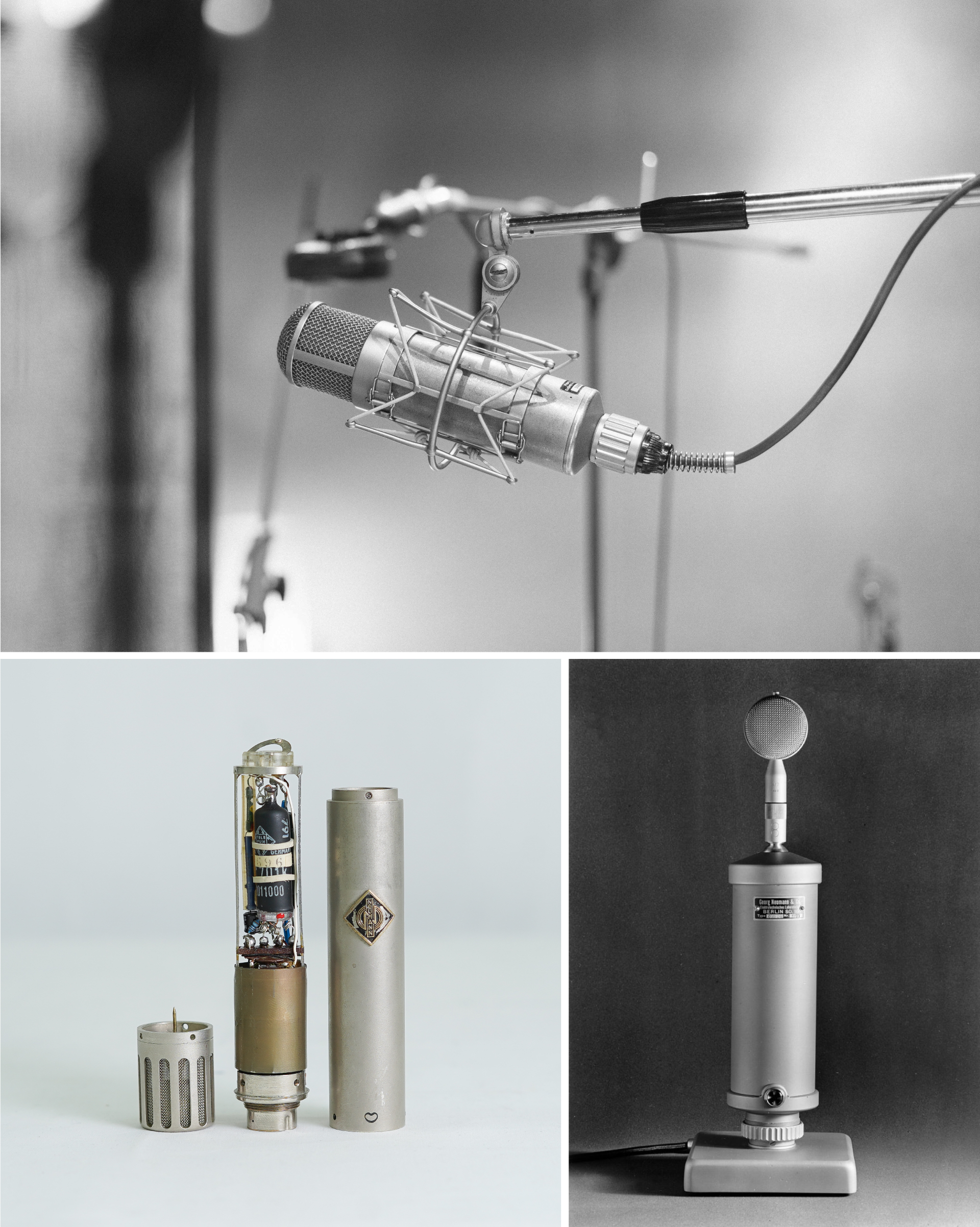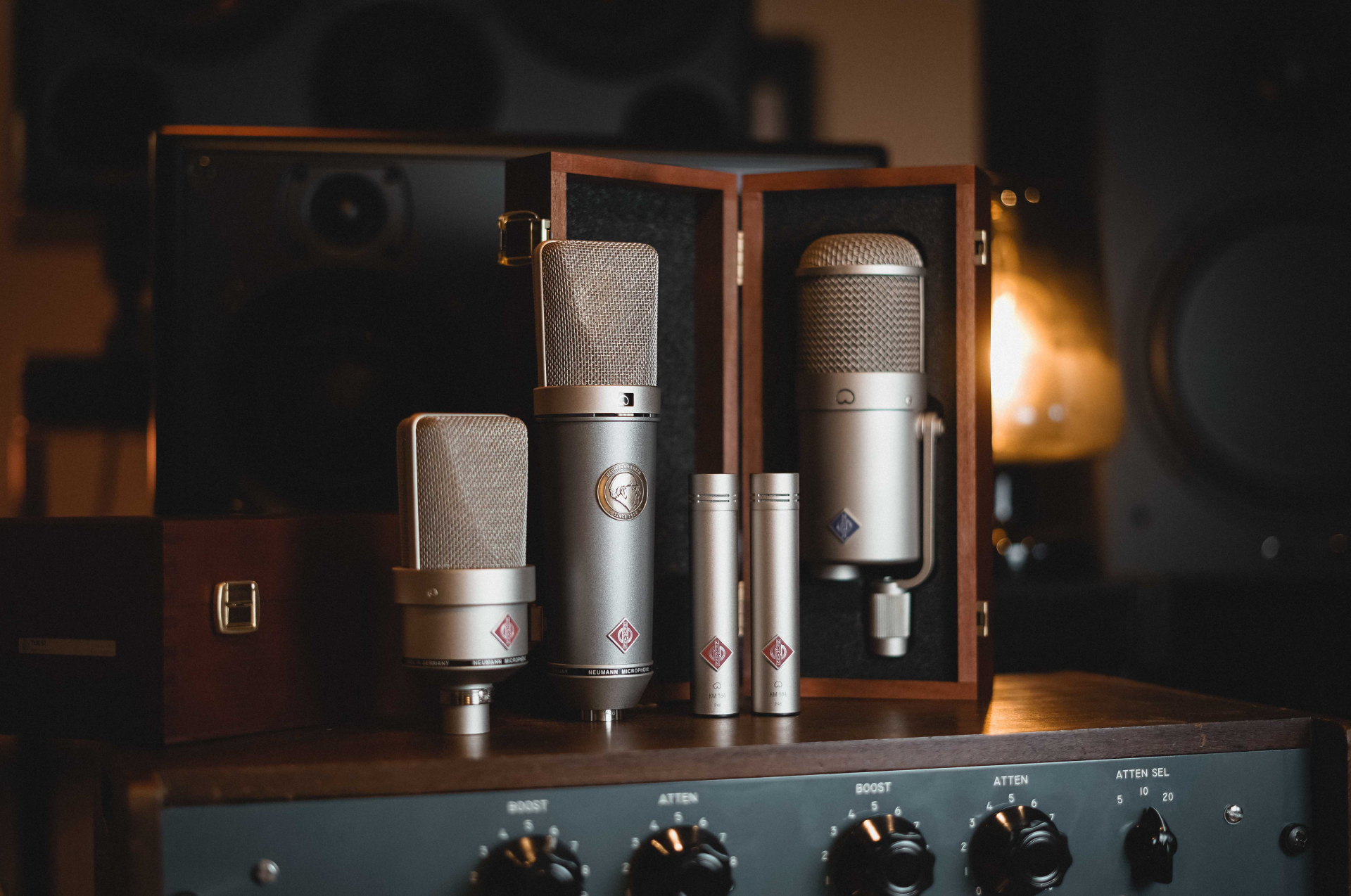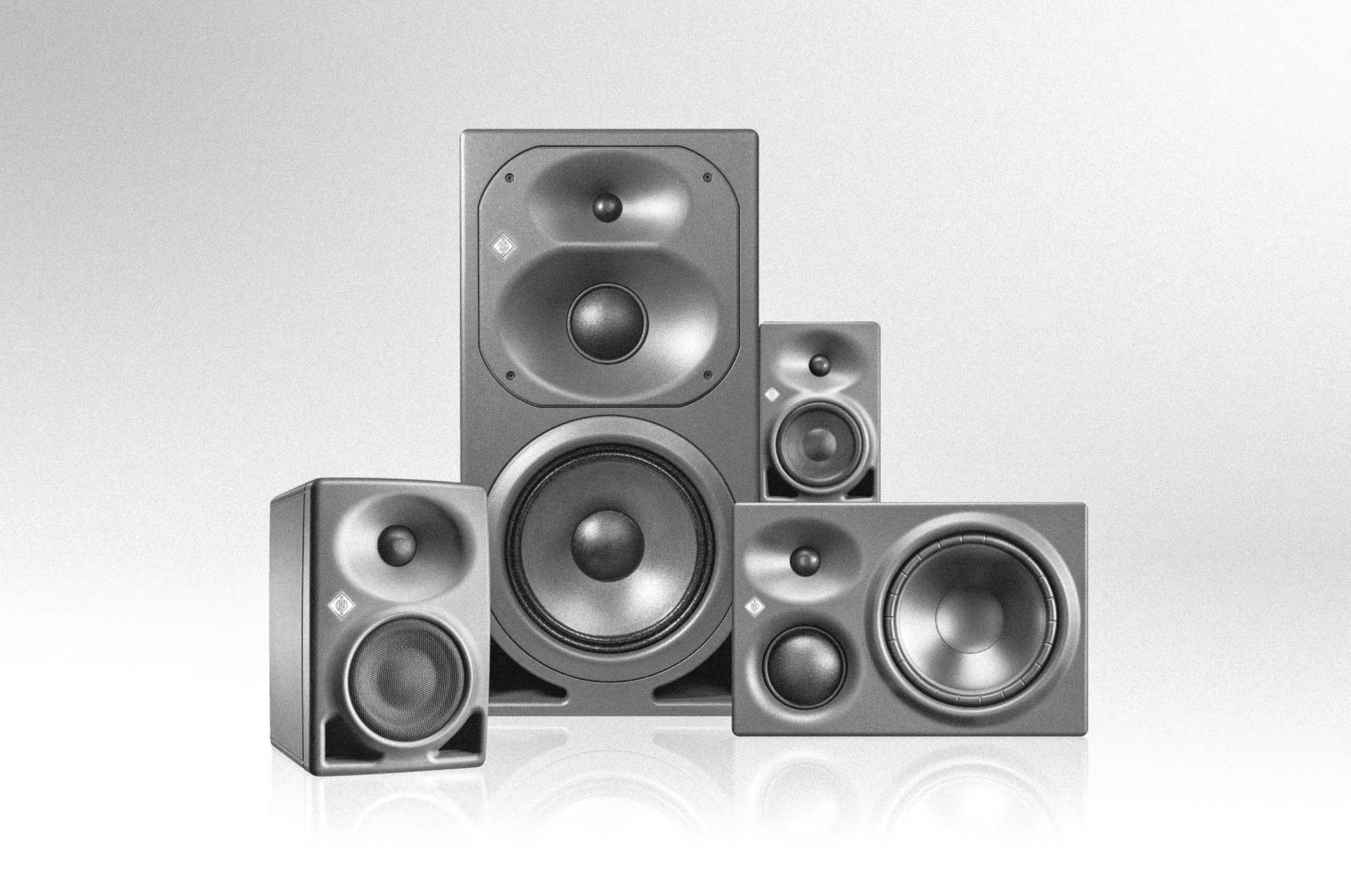
Among the league of legendary pro audio brands, Neumann arguably takes the crown. Everyone from seasoned pro engineers, to studio runners and musicians is to some degree familiar with the quality craftsmanship and revered status a Neumann mic represents. The company, formerly Georg Neumann and Co. was founded in 1928 by Georg Neumann, widely considered to be the greatest microphone designer of all time. His desire to find solutions and overcome technological hurdles with fundamentally new approaches essentially laid the foundation for modern day mic design, as well as contributing enormously to other areas of the professional audio, broadcast and recording market. From the revolutionary Reisz microphone to cutting-edge electroacoustic measuring instruments and pioneering record-cutting technology, his quietly tenacious appetite for innovation pushed the limits of what was technologically achievable and gave birth to some of the most iconic recording equipment ever made.
After spending his early years experimenting with new idea to improve problematic carbon-based microphones (culminating in the ground-breaking Marconi-Reisz broadcast microphone) Neumann’s first real success came in the form of the CMV3. Nicknamed “The Bottle”, the CMV3 was a radical departure from traditional microphone designs of that era; a large condenser microphone with a cylindrical chamber that offered a series of interchangeable capsules with differing pickup-patterns. It’s superior sound quality and versatility meant it quickly became established as the industry-standard for studio and broadcast use. Introduced in 1928, it would remain virtually unchanged until the end of WWII. The CMV3 is an iconic design, but it was big and heavy, and would soon be superseded.
It was the introduction of the U 47 – the worlds first multi-pattern condenser microphones – that would secure Neumann’s reputation as a leading figure in the field of microphone design. With a built-in switchable polar pattern, extended frequency response, and altogether higher fidelity sound, it offered something no other microphone on the market could (particularly the then ubiquitous RCA ribbon mics), and quickly became a hit among studios worldwide. Indeed, some of the most iconic vocal tracks every recorded were cut with a U 47, from Frank Sinatra and Nat King Cole to The Beatles and Amy Winehouse. To this day, it remains one of the most revered and celebrated microphones ever made, and for good reason.
It wasn’t just about microphones, however. In the meantime, Neumann had also begun to broaden his attention to other aspect of the industry. In the early 50s, Neumann soon became a leading manufacturer of cutting lathes, highly specialised measuring equipment, and even battery technology. This diversification of business into a multitude of relevant yet different fields enabled the company to grow significantly faster, driving the cogs of innovation and R&D development at an unprecedented rate.

Further innovations in mic technology would soon follow. In 1949 the M 49 was designed in collaboration with Dr. Herbert Großkopf of NWDR (Nordwestdeutscher Rundfunk), who had patented the world’s first continuously variable remote-controlled pattern selector. This clever new invention made it possible to switch the characteristic of the mic smoothly from omni, to cardioid, to figure-of-eight, without any loss in sensitivity. Neumann acquired the rights and would go on to produce the M 49 (in its many forms) as we know it today. The M 49 was hugely popular with classical engineers and studios in particular, thanks to its neutral yet musical quality. It is still widely regarded as one of the finest microphones to have ever been built.
The creation of the M 49 can be attributed in part to the development of the Telefunken AC701k tube. This microphone-specific tube single-handedly enabled a range of smaller, superior tube condenser microphones to be produced. The emerging demands of television and broadcast companies to achieve better quality in a smaller form-factor saw the creation of such models as the compact and beautiful KM 5 series, among others. This new market also saw the introduction of stereophonic microphones, notably the Neumann SM 2 – neatly housing two coincident capsules into a single basket. It would remain the only stereo microphone available to market for many years.
After the success of the legendary U 67 in 1960, The tube era predictably came to its natural conclusion, and so a new era of microphones was born – this time built around the Field-Effect-Transistor, or “F.E.T”. It would prove a pivotal moment, as more compact small diaphragm (or “pencil”) condensers with lower noise and greater reliability could be manufactured. The KM 83-85, U 47 fet and perhaps Neumann’s most popular mic ever made – the U87 – were all introduced with this new technology. Not long after, Neumann developed the concept of “phantom power”, removing the need for an external power supply. In turn, the special multi-core mic cable of the past was replaced by a new world-wide 3-pin standard, the XLR.

Nowadays, Neumann operates as part of the Sennheiser group, in Berlin. However the same values and ethos that helped cement the company’s reputation still apply. Since becoming part of the Sennheiser family in the early 90s, they have gone on to produce some of their most popular models to date, and, incredibly, they still offer servicing on all of their microphones manufactured since WW1 – a testament to the legacy of the company and further evidence that a Neumann microphone is a worthwhile investment.
We’ve also witnessed the revival of some of their most iconic designs, namely the reintroduction of the U 67, U 47 fet and now M 49 V. These re-issued classics have each been meticulously crafted from the ground-up according to the precise specifications and white-papers of the originals, with every nuance and detail considered and implemented as it would have been, decades ago. Not only that, but new additions to the Neumann family such as the award-winning TLM series have put the “Neumann sound” into the hands of those who might otherwise only have dreamed of owning a Neumann. The TLM 103, for example, has become one of their most successful and popular products to date. Furthermore, the increasing desire among engineers for the analogue warmth of a tube mic saw the introduction of completely new models such as the M 149 and M 147 – both mics inspired in their own way by the classics, but with the added reliability and benefits of modern-day engineering.

Despite their impressive line-up, microphones are only part for the current Neumann story. After the acquisition of specialist speaker manufacturer Klein & Hummel in 2010, Neumann’s family of high-end studio headphones and monitors set a new benchmark for quality at an unbelievably competitive price-point. The introduction of the KH range of studio monitors made high-end monitoring accessible to a new audience, delivering incredible sonic performance with Neumann’s reliability, build quality and attractive design. With the dominance of digital workstations and a modern era of hybrid recording setups becoming commonplace, 2023 saw the introduction of the MT 48 – a collaboration with converter specialists Merging Technologies and Neumann’s first ever audio interface.
It’s impossible to overstate the impact George Neumann & Co. had – and continue to have – on the pro audio world. From truly ground-breaking microphone designs that continue to make their indelible mark on the industry to other equally important but overshadowed technological and electrical advancements, it is a company with a heritage others could only dream of. From the very beginning, their products have become synonymous with quality, graced some of the finest recording ever made, and have accompanied engineers, musicians, broadcasters and more for almost a century. Long may it continue…


